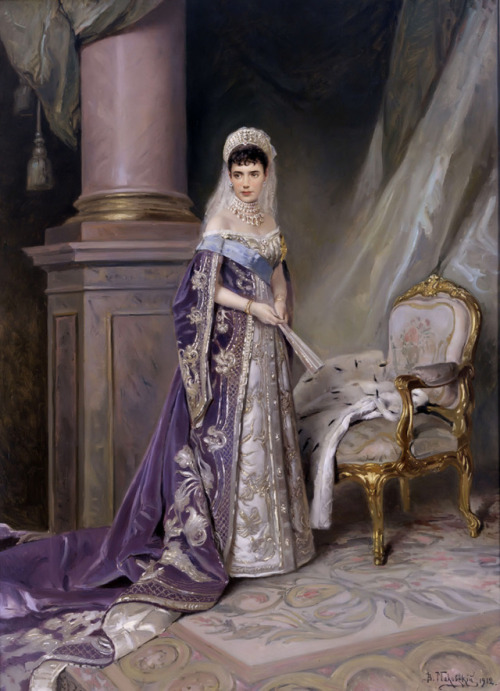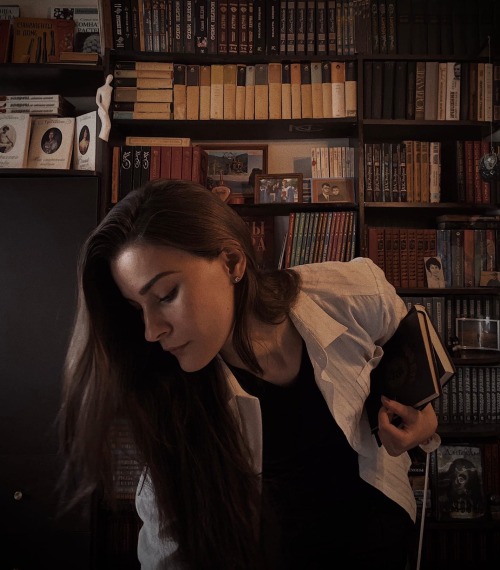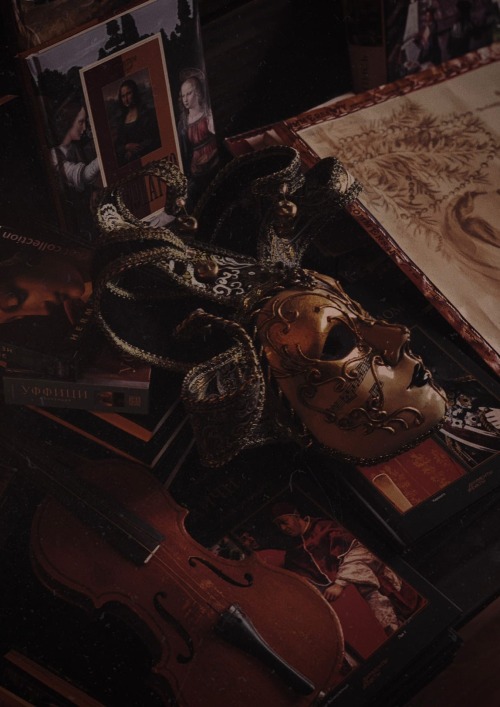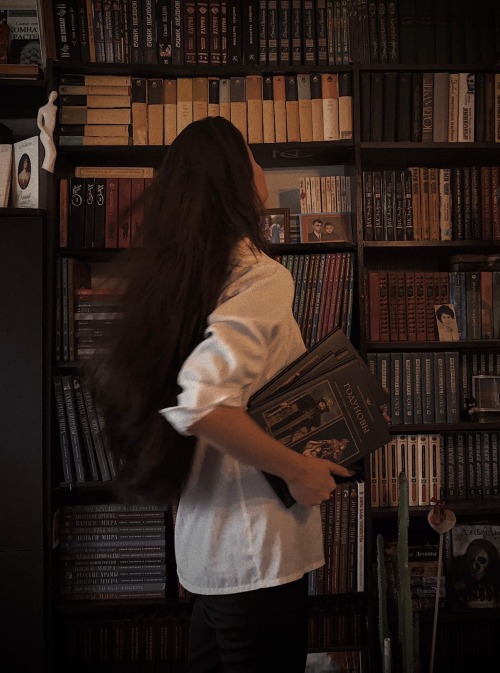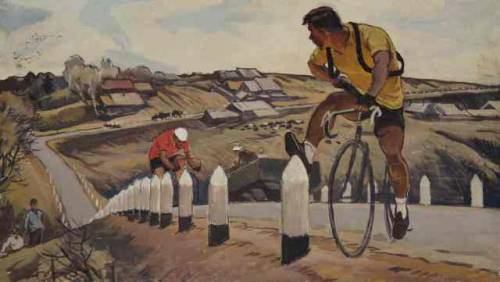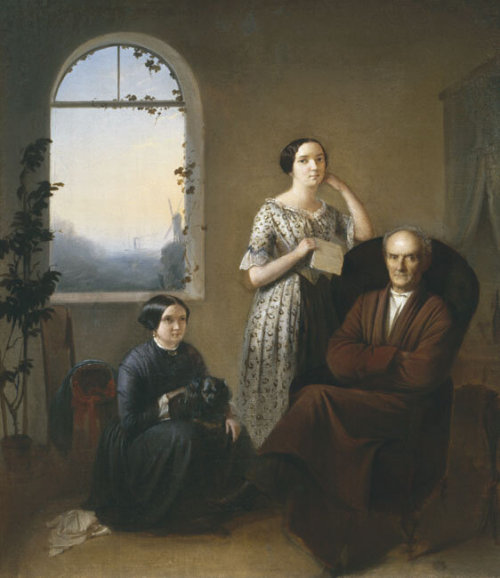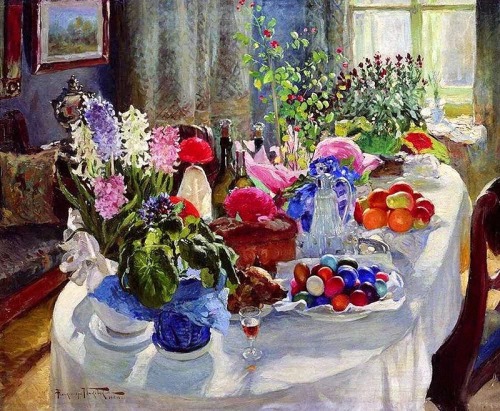#искусство
Marc Chagall. A wheatfield on a summer’s afternoon.
1942. Philadelphia Museum of Art, Philadelphia.
Post link
Isaac Levitan. At The Summer House In Twilight.
1895. Rostov and Yaroslavl Museum-reserve of art and architecture, Rostov.
Post link
Mikhail Shemyakin. Girl in a Sailor Suit (Sonechka).
1910. Museum of Russian Impressionism, Moscow.
Sonechka… The name of Mikhail Shemyakin’s young model is the only thing that researchers have been able to discover about the girl. We’re left to guess who she was, and to enjoy the beautiful technique of her portrait – “Girl in a Sailor Suit".
Look for a moment at the background - it’s almost impossible to understand just where she may be sitting. The background was executed in wide strokes, while the image of the young girl herself was clearly created with slower, softer and more tender brushstrokes, with both rapture and delight. The composition is unusual, built around a diagonal, and the light forward tilt of the head was a favorite touch of the artist. The bold and generous reflections of light on the girl’s face, and the collar and cuffs of her sailor suit are called “overtones” and emphasize the heroine’s vivacity. “His paintings are filled with grace, rhythm and subtlety, he seeks to grasp man’s nature and inner life with just a few strokes, and is perfectly precise in approaching but never crossing the fine line between artistic creation and a piece of craft” – such was the high opinion of one art critic about Shemyakin. The artist favored portraiture over all other genres, rather like his teacher Valentin Serov. He excelled in it, and received well deserved recognition from Igor Grabar, the renowned Russian painter, art historian and critic: “A new powerful master of portraiture, a highly professional artist has emerged on the Russian artistic scene. Shemyakin’s portraits have always been skillfully drawn, well composed and are outstanding with their strong sense of character!” Shemyakin portrayed many famous people of his time, such as Vladimir Filatov, the Russian-Ukrainian ophthalmologist and surgeon, and the Russian botanist and physiologist Kliment Timiryazev. But musicians were far and away his favourite subject, earning him the “high nickname” from Igor Grabar – “Painter for the Musicians”. Vladimir Mayakovsky, who was also educated in the arts, called Shemyakin a “realist-impressionist-cubist”. Shemyakin inherited his recognizable “wide manner” of painting from his teachers Valentin Serov and Konstantin Korovin, and it would later be recognized as one of the main features of Russian fine art of the late 19th century.
Post link
Vladimir Makovsky. Empress Maria Feodorovna.
1912. State Russian Museum, Saint Petersburg.
One of the most tragic figures of European royalty is the Empress Maria Feodorovna, widow of Alexander III, and mother of Nicholas II of Russia.
The revolution that toppled the Romanovs came as no surprise to many members of the imperial family. Only Nicholas and Alexandra seemed shocked by the Russian people’s decision to overthrow a regime that had epitomized inefficiency and corruption. Maria Feodorovna had one opportunity to see Nicholas II just after his abdication in early 1917. After a brief encounter with her son, the Dowager Empress headed towards one of the imperial villas in the Crimea. While revolution spread throughout Russia, Maria Feodorovna was joined at her seaside refuge by Grand Duke Alexander and Grand Duchess Xenia, their six sons, Prince Yussupov, his parents and his wife Grand Duchess Irina, daughter of Xenia and Alexander, and Grand Duchess Olga and her new husband Colonel Koulikovsky.
Nicholas and Alexandra, along with their children, were sent into exile in the provinces. The imperial couple were initially sent to Tobolsk, and later on moved to Yekaterinburg, near the Ural Mountains. They were all assassinated by Bolshevik guards in Yekaterinburg in July 1918. Grand Duke Michael was also apprehended and eventually executed while in prison during the summer of 1918. Not content with the massacre of these Romanovs, Bolsheviks went around the civil war torn country trying to execute all remaining Romanovs. The year 1918 also saw the assassination of the following Romanovs: Grand Duke Paul Alexandrovich, uncle of Nicholas II; Grand Duke Nicholas Constantinovich, grandson of Nicholas I; three children of Grand Duke Constantine Constantinovich: Ivan, Constantine and Igor; Grand Duke Dimitri Constantinovich, grandson of Nicholas I; Grand Dukes Nicholas Michaelovich, Serge Michaelovich and George Michaelovich, grandsons of Nicholas I; Grand Duchess Elizabeth, widow of Grand Duke Serge Alexandrovich and sister of Tsarina Alexandra Feodorovna. Prince Dimitri Pavlovich Paley, son of Grand Duke Paul Alexandrovich, was also assassinated. In all nineteen Romanovs were brutally executed by the blood-thirsty Bolsheviks. The imperial family never recovered from this tragedy.
Maria Feodorovna and her surviving family left Russia in the spring of 1919. They boarded the British ship HMS Marlborough and never again set foot in their country.
On September 28, 2006, Dowager Empress Maria Feodorovna was laid to rest beside her beloved husband, Czar Alexander III at the SS Peter and Paul Cathedral in Saint Petersburg.
Post link
Isaak Brodskiy. Vladimir Lenin at the Rally of Putilov Plant Workers in May 1917.
1929. State Historical Museum, Moscow.
In February 1917 strikes at the factory contributed to setting in motion the chain of events which led to the February Revolution. In 10 March 1919 at protest rally in the factory striking workers condemned the Bolshevik government in a resolution claiming “…the Bolshevik government is not the authority of the proletariat and peasants, but the authority of the dictatorship of the Central Committee of the Communist Party…”. When Lenin came to Petrograd to give a speech on 13 March the workers demanded his resignation and when Zinoviev tried to address the workers he was greeted with shouts: “Down with the Jew!”. Strikers barricaded themselves in the factory which was stormed by the Cheka to suppress the strike and about 200 workers were executed.
After the October Revolution it was renamed Red Putilovite Plant (zavod Krasny Putilovets), famous for its manufacture of the first Soviet tractors, Fordzon-Putilovets, based on the Fordson tractor. The Putilov Plant was famous because of its revolutionary traditions. In the wake of Sergey Kirov’s 1934 assassination, the plant was renamed Kirov Factory No. 100.
You may find more information about the factory here.
Post link
Aleksandr Benois. Chinese pavilion. Jealous husband.
1906. State Tretyakov Gallery, Moscow.
Benua, confined within the limits of his retrospective view of history, believed that the ages and style do not come one after the other, but are unique and closed within them. Rococo with its enthusiasm for things Chinese, Oriental ornamentalism, was similar to the style of Art Nouveau, of the time of Benua. The image of Rococo, the most refined and exquisite style of the 18th century, beloved by the artists of The World of Art, is embodied, according to Benua, in the shapes of outlandish Chinese pavilion, which resembles a light burning in darkness. This fragile island of light is lost between two abysses: a dark starry sky and its reflection in water. The instability of the vision is emphasized by the comic fussing of the characters, dolly ladies and gentlemen, resembling a Chinese shadow show. The style of Rococo, like a bright flash, glared up on the horizon of European culture and has long been extinguished, with a mere flicker remaining.
Post link
Mykola Samokysh. Courage Of General Raevsky.
1912. Museum-Panorama the Battle of Borodino, Moscow.
July 23, 1812 the battle of Saltanovka, which has become one of the most legendary pages of the life of General Raevsky. This feat glorified General in the nation. Then arose a legend which was reflected in the famous painting — Rajewski goes on the attack, and next to him are his sons, 17-year-old Alexander and 11-year-old Nicholas.The General himself said it was just a legend. The sons were, indeed, in his case, but in attack they did not go. But in people’s memory Raevsky was a man who sacrifices for the homeland the most expensive.
Post link
Viktor Vasnetsov. Duel Peresvet With Chelubey.
1914. Samara Regional Art Museum, Samara.
Alexander Peresvet, also spelled Peresviet, was a Russian Orthodox Christian monk who fought in a single combat with the Tatar champion Temir-murza (known in most Russian sources as Chelubeyor Cheli-bey) at the opening of the Battle of Kulikovo (8 September 1380). The champions killed each other in the first run, though according to a Russian legend, Peresvet did not fall from the saddle, while Temir-murza did. Peresvet’s body, together with that of his brother-in-arms Oslyabya, were brought to Moscow, where they lie buried at the 15th-century Theotokos Church in Simonovo.
Post link
Меня всегда потрясает в людях эта невероятная, божественная черта — потребность творить. Желание воплощать незримые образы, созревающие в сознании, давать физическое воплощение бесплотным фантазиям и идеям. Оживлять воображение.
Это та же сила, которая томилась в пальцах Микеланджело, когда он отсекал от холодного мрамора безжизненные куски, та же энергия, бурлящая в руках Бетховена, упорядочивающего ноты в Лунную сонату. Это та же самая искромётная мощь, двигающая перо Достоевского.
Она живёт с первого же рисунка, начертанного первобытными людьми в тёмных скалистых ущельях, постоянно видоизменяясь и меняя обличия. Она живёт, бессмертная и награждающая бессмертием тех, кто её принимает.
Post link
Стремление к знаниям и обучению — самое прекрасное в тёмной академии. Часто люди стесняются того, что чего-то не знают, притворяются, что поняли значение термина, загадочно проскользнувшего в речи собеседника, робеют при упоминании каких-то сложных теоретических концепций.
Но не знать чего-то — не стыдно! Это абсолютно естественно.
Мир широк и велик, и «мир» — это не только планета, приютившая человечество, это огромная звёздная паутина, в которой блистающей алмазной сеткой вязнут системы, галактики, сверхскопления галактик, миллиардами сверкающих осколков рассыпаны звёзды и тусклые крошки планет, комет и спутников. За тысячи и тысячи лет копившиеся и по крупицам собиравшиеся знания не стали абсолютными, за эти стремглав промчавшиеся века люди даже на десяток процентов не успели исследовать распластанный под их ногами океан и окружающий их со всех сторон необъятный, непостижимый космос. Да что там космос с его бесконечностью! Человек не постиг даже собственный мозг, не до конца разобрался с его нейронными импульсами и возможностями.
Вспоминайте обо всех этих неизведанных тайнах мироздания каждый раз, когда стесняетесь переспросить о чём-то собеседника, каждый раз, когда натыкаетесь на незнакомое слово в тексте, каждый раз, когда кто-то будет нахально щеголять перед вами глубиной своих познаний в какой-то узкой сфере. И пусть подмигивающие с неба звёзды будут вам группой поддержки.
Post link
Music: Montagues and Capulets, also known as Dance of the Knights, by Russian composer Sergei Sergeyevich Prokofiev.
Моя душа словно старый пустующий дом, населённый призраками. Они вальсируют по тёмным коридорам под траурный марш погибших иллюзий и ожиданий, скорбящими глазами поглядывая в окна, за которыми простирается мир, в который им никогда не суждено вернуться.
Post link





